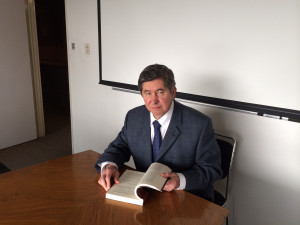Application of the Kalman Filter to make Population Estimates and Projections in small Geographic Areas
Présenté par : Manuel Ordorica (Universidad Nacional Autónoma de México) ; Discutant.e : à venir
In Mexico, and undoubtedly in many developing countries, population estimates an projections have focused on large areas such as whole countries, major regions or states. Yet few efforts have been made to arrive at calculations and projections for small geographic areas. There are two reasons for this: one, demographic information is not available at the micro-regional level and also, estimates at those levels are subject to high variance. It is not possible to obtain reliable indicators on mortality and fertility, much less on internal and international migration. With a small increase or decrease in th value of the numerator or denominator of demographic rates, a very significant change is produced in this indicator. The aim of the presentation is to propose a methodology allowing us to combine demographic source, such as population censuses and vital statistics, with data from aerial photographs. We combine information from the Sky with information from Earth. The method used is the Kalman Filter. What is the Kalman Filter? It is a recursive, unbiased estimator using least squares, with a random Gaussian signal. The Kalman Filter has great potential to be applied in demography because of its similarity to linear models and to time series analysis. It comprises a modern way to of discussing the Theory of Least Squares. The essential difference is that with the Kalman Filter, parameters are stochastic processes, i.e. they vary throughout time. In contrast, in the conventional linear model, parameters are constant.
In this seminar we present the use of the Kalman filter to make population estimates of the city of Tenosique, in the state of Tabasco, Mexico, combining images from the space and censuses. From the space, with images of google maps, it can be seen that the persons, in this small town of Tenosique, live in one-story houses. This would allow to make population calculations considering the area of the city as an approximation to the increase or decrease of the population. The increase of the surface is related to the population growth of the area. We chose Tenosique due to the strong migration of people from Central American countries that passes through that place to the United States. The problem is that we do not have reliable information at that geographical level on the demographic components; the only data is the population based on the census that is carried out every 10 years. It is known that there is a significant movement of undocumented migrants from El Salvador, Honduras and Guatemala. They leave their countries because of violence and poverty. The migrants only spend a few days in Tenosique living in shelters that offer priests. Soon they are looking for train tracks waiting for "The Beast" (the train) to appear in order to continue their trip to the United States.
The objective of the research is to make population estimates of Tenosique in order to know the effect of this undocumented migration of those countries. In summary, with the Kalman Filter it is possible to obtain population estimates combining those obtained from the Sky, with satellite images, such as those obtained from Earth, that is, with the censuses.
Manuel Ordorica

He is an actuary at the Faculty of Sciences of the National University of Mexico; Master in demography by El Colegio de Mexico and PhD in Operations Research by the National University of Mexico. He worked in demographic analysis at the National Statistics Institute and in the Population Council in Mexico. He is currently a professor-researcher at El Colegio de México. He was the General Secretary in the same institution. He is working in Mathematical Demography, in Population Projections and in Population Policy. In 1998 he got in Mexico the National Prize in Demography.
